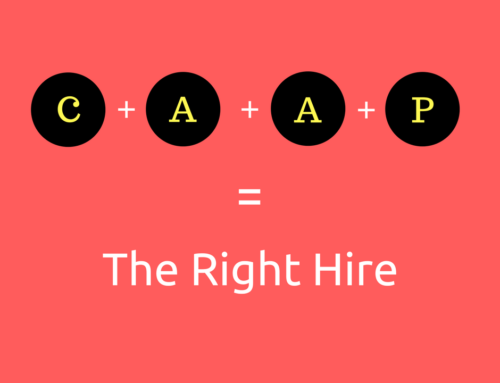Have you heard of the “Hire to Hurt” recruiting strategy?
I recently came across an article talking about taking bold steps executing talent recruiting strategies. The core strategy of that article was to boldly hire all the key staff away from your competitor so much so that it begins to hurt your competitor and drive them into the ground.
The author calls this the “boldest recruiting strategy of them all???.
In his article, the author cited a few examples of how companies have employed this strategy, and one of the examples he cited was this Wall Street investment bank who hired away a key investment banker from their direct competitor.
The compensation package they gave this investment banker was worth $5 million. The executive who hired away the investment banker was asked how this would benefit their firm and the executive declared that he didn’t know how it would help their firm but what he knew is that their competitor will not be making the $50 million the previous year.
Sounds like a great strategy, doesn’t it?
But is it?
Before you start jumping with joy and asking your HR departments to begin adopting this strategy, let’s just take a step back and dig a little deeper by asking the following questions:
1. Who really wins?
So you hire away your competitor’s star performer who has been making $50 million for them.
Here’s the crucial question:
If the Star Performer can be bought with $5 million, what makes you so sure he or she can’t be bought out by another of your competitor for $8 million?
Here’s another question for you to ponder:
What makes you so sure your competitor won’t offer to hire that Star Performer back from you?
So at the end of the day, who really wins?
It’s not going to be your competitor, and it sure is not going to be you either.
The ultimate winner of this whole silly episode is the Star Performer who stands to pocket all of the salaries you and your competitors throw at him.
2. What makes you so sure that your competitor won’t recover?
So you think you’ve blown a hole so huge in your competitor they won’t recover? What makes you so sure they won’t?
And here’s the key question for you to ponder:
What makes you so sure that your competitor won’t make MORE than the $50 million they “lost??? when they do recover?
Never underestimate the resilience of organisations. As the saying goes, “no one is indispensable???.
3. You only have one competitor?
This strategy might just work for you if you had only one competitor in the entire market. But how many companies have only one competitor in the market?
The larger your competitor’s organisation, the more difficult it is to hurt them using such a strategy.
The more extensive their network is around the globe, the more difficult it is to blow a hole in them that will drive them into the ground.
All you have to do is look around you. How many companies have only one competitor in their industry or in their market?
How many competitors does your organisation have?
4. How sure are you the Star Performer you poached from your competitor will be able to perform in your organisation?
I’ve written about this before but it is worth repeating here.
Look at the research done by Dr. Boris Groysberg of Harvard University. His extensive 7 year study of Star Performers on Wall Street (Yes, Wall Street!) shows indisputable evidence that Star Performers generally don’t perform after moving over to the new organisation.
These Star Performers typically bring with them only a miserable 30% of their original capabilities from where they came. And the reason for this anomaly is because most of the other 70% are not portable – such as culture, systems, processes, support, people, management and leadership.
In other words, these Star Performers are star performers because of the environment they work within.
Unless your organisation is very similar and almost identical in terms of structure, support, systems, processes and culture. Otherwise, all you are doing is poaching a dud.
So here’s my closing question:
If such a strategy was really that effective, then why aren’t many (or any) big companies out there jumping on the bandwagon today?
And oh, one other example the author cited was Uber.
However the bad press Uber has been getting recently isn’t doing any justice to their bold hiring strategy.
What do you think?
Share this article with your friends and colleagues!
Learn how to hire the right people every time, avoid the mistakes most interviewers make, maximise employee engagement levels, lead and manage your employees to peak performance, minimise attrition rate, and so much more…
PLUS: Receive a free sample chapter on How to Craft Effective Interview Questions from my yet-to-be-released book How to Hire the Right People Every Time: The Executive’s Guide to Getting It Right
Get your weekly tips now. Join us here.








Leave A Comment